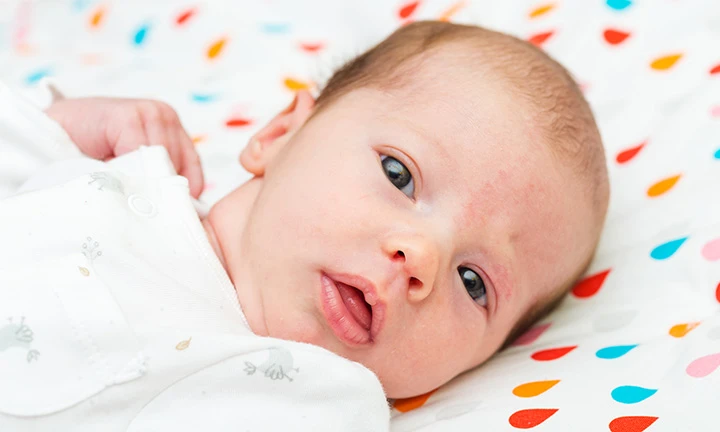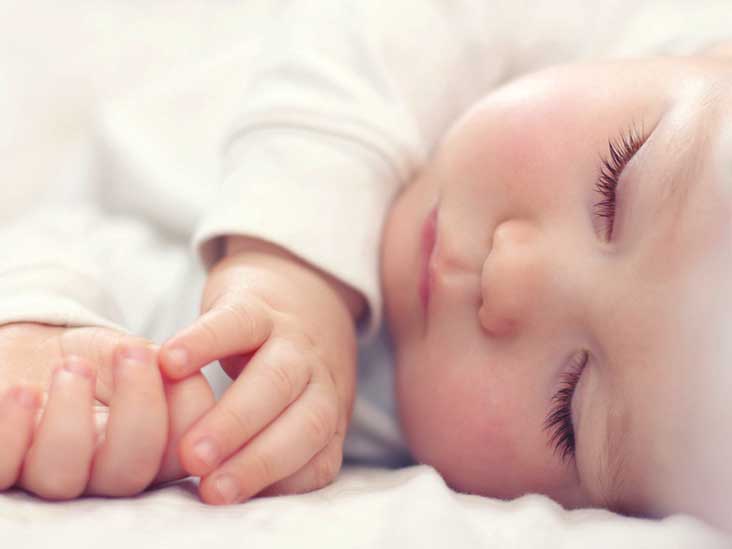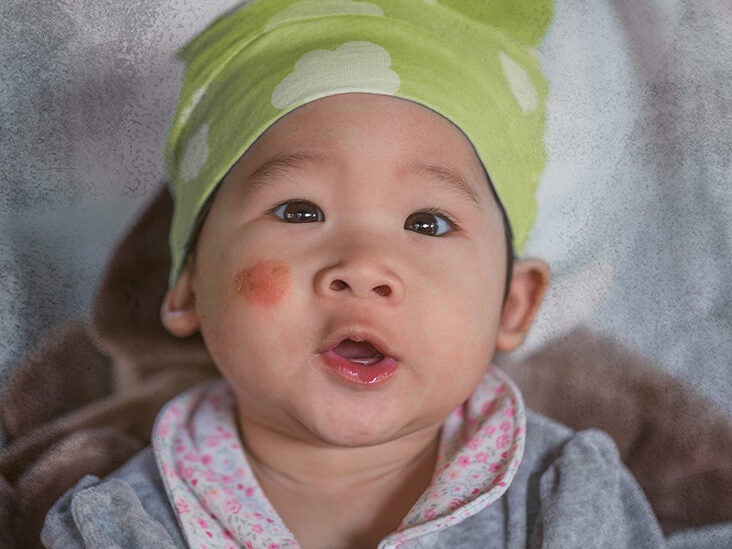vitiligo in babies nhs
The first signs of vitiligo in kids are white patches on the skin that are commonly found on the hands feet arms face and lips. It is common affecting about 1 of the worlds population.

Tinea Versicolor In Babies And Children Babycenter
Nonsegmental or generalized vitiligo is the most common type.

. While the cause is unknown it is thought to be an autoimmune disorder and often runs in families. Treatments can be provided by the NHS. Segmental vitiligo is less common than non-segmental vitiligo although its more common in children.
Sometimes vitiligo in babies also results in whitening of hair. Vitiligo patches can appear anywhere on the skin but common sites are usually around the orifices the genitals or sun-exposed areas such as the face and hands. It is time-consuming and not always successful or available.
Creams steroids and Protopic which can be prescribed by your doctor which are used for up to 2 months or longer under close supervision. Vitiligo is a condition in which white patches of skin appear on different parts of the body because the cells that make pigment in these patches melanocytes have been destroyed. In segmental vitiligo also known as unilateral or localised vitiligo the white patches only affect one area of your body.
This occurs when melanocytes the cells responsible for making skin pigment are destroyed. There is genetic susceptibility. Vitiligo vit-il-EYE-go is a skin disorder that causes the skin to lose its color.
It is often symmetrical affecting both sides of the body. Grafting of normal skin to small patches of vitiligo has been tried. Initially the vitiligo may start as a patch that is slightly paler than the rest of your skin but will gradually become completely white.
The skin otherwise feels entirely normal. Vitiligo is a condition in which the skin loses its pigment cells melanocytes. The condition occurs when melanocytes the skin cells that produce melanin the chemical that gives skin its.
These long-lasting patches can cause psychosocial issues in some children especially teenagers. Melanin is produced by skin cells called melanocytes and it gives your skin its colour. The discolored areas usually get bigger with time.
The incidence appears to be higher in darker-skinned individuals. Some people also have loss of pigment in patches of hair on the head or body. Vitiligo is thought to be a systemic autoimmune disorder associated with deregulated innate immune response although this has been disputed for segmental vitiligo.
Vitiligo is a common inflammatory condition that causes patches of skin to lose their natural color. It usually starts earlier and affects 3 in 10 children with vitiligo. The extent of the condition is unpredictable.
Vitiligo consists of irregularly shaped patches of skin that lack the normal melanin pigmentation and are very pale pink or white. In some children vitiligo patches dont spread whereas in some children it spreads rapidly all over the body. Typically vitiligo produces symmetrical depigmented areas of skin that otherwise appear perfectly normal.
It is classified into two subtypes of non-segmental vitiligo or vitiligo used as an umbrella term and segmental vitiligo according to its distribution and extent. Vitiligo can sometimes also affect the mucous membranes such as the tissues inside the mouth nose and eyes. Vitiligo often has a significant impact on quality of life causing social isolation depression difficulties with sexual relationships.
Light treatment narrowband UVB and PUVA for which you would have to go to hospital 2 or 3 times a week. It is not contagious and generally does not cause other health issues. Vitiligo vit-ih-LIE-go is a disease that causes loss of skin color in patches.
The cause of vitiligo in children is unknown though. The most common sites for vitiligo are the hands and face around body openings. Vitiligo is an acquired skin disorder characterised by white depigmented patches in the skin caused by the loss of functioning melanocytes.
The edges of the patch may be smooth or irregular and may have an inflamed red border. The condition can affect. The skin otherwise feels entirely normal.
Patches may occur on one section or all over the body and may join together coalesce. Vitiligo consists of irregularly shaped patches of skin that lack the normal melanin pigmentation and are very pale pink or white. The vitiligo was not triggered by skin damage such as severe sunburn Koebner response An alternative to skin grafting involves taking a sample of skin removing the melanocytes from it and transplanting them onto the areas of vitiligo.
As a result well-defined white patches appear on the skin. These types of treatments are time consuming carry a risk of scarring and are not suitable for children. Smooth white areas called macules if less than 5mm or patches if 5mm or larger appear on a persons skin.
What does vitiligo look like. If you have vitiligo in a place that has hair the hair on your body may also turn white. This chronic condition causes loss of skin pigment melanin resulting in white patches in the skin.
Vitiligo pronounced vit-uh-LIE-go is a medical condition in which patches of skin lose their color. Vitiligo is caused by the lack of a pigment called melanin in the skin. There are two types of vitiligo.
Hair and oral cavity may also have discoloration. Vitiligo can affect any area of skin but it commonly happens on the face neck and hands and in skin creases. This happens when melanocytes skin cells that make pigment are attacked and destroyed causing the skin to turn a milky-white color.
Segmental vitiligo is less common than non-segmental vitiligo although its more common in children. It occurs in approximately 1 of the worlds population. It can start at any age after birth but in more than half of people affected it does so before 20 years of age.
More than skin deep. Non-segmental vitiligo is the most common type of vitiligo affecting around 9 in 10 people with the condition. Vitiligo is a relatively common pigmentation disorder in which the skins pigment-making cells melanocytes are lost or destroyed.
The main available treatments are. Vitiligo is a long-term condition where pale white patches develop on the skin. Laser treatment for vitiligo is currently not available under the NHS as there is no definite proof yet that it is effective.
Vitiligo is a persistent or chronic condition in which areas of skin lose their normal pigment and become very pale or pink. Theyre also not widely available in the UK. Vitiligo is an acquired chronic depigmentation disorder characterized by selective loss of melanocytes and a chalky white appearance of affected areas of skin and sometimes hair.
Its caused by the lack of melanin which is the pigment in skin. It is often symmetrical affecting both sides of the body. Vitiligo is the complete loss of pigmentation arising in discrete patches of skin.
This can result in discolored patches in different areas of the body including the skin hair and mucous membranes. Vitiligo is a chronic long-lasting disorder that causes patches of skin to lose pigment or color. Vitiligo can affect any part of the body and it can occur in people of any age ethnicity or sex.
The exact causes of vitiligo in children are not known. Vitiligo is a component of some rare syndromes such as the Vogt-Koyanagi-Harada syndrome.

The A Z Of Baby Skin Conditions The Signs Every Parent Needs To Know And Tips To Treat Them

The A Z Of Baby Skin Conditions The Signs Every Parent Needs To Know And Tips To Treat Them

Say Hello To Me Cute Baby Pictures Albino Model Black Baby Girls

Tinea Versicolor In Babies And Children Babycenter
Abc Of Baby Skin Waterwipes Us

How To Syringe Feed A Baby 10 Steps To Follow

Tinea Versicolor In Babies And Children Babycenter

About Nevus Simplex Stork Bites Angel Kisses Salmon Patches Pampers

Waardenburg Syndrome Symptoms Treatment And More

Albinism What It Is Types Symptoms Treatment And Is It Genetic
Abc Of Baby Skin Waterwipes Us

Tinea Versicolor In Babies And Children Babycenter

White Patches Spreading Mixed Race Baby Face Mum Sos Channel Mum Chat
Abc Of Baby Skin Waterwipes Us

Shaky Jerky Eyes In An 8 Week Old Infant Clinical Advisor

